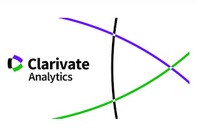Psychological adjustment in cybervictims and cyberbullies in secondary education
Abstract
The rise of cyberbullying among high school students and the importance of certain variables of psychological adjustment for the comprehension of this type of violent behavior both in bullies and in victims. This work aims to analyze the psychological profile of individuals involved in situations of cyberbullying, both victims and bullies. The adjustment variables analyzed were self-concept, perceived stress, loneliness, depressive symptomatology, social anxiety, life satisfaction, and emotional intelligence. Using a sample of 1318 adolescents (47% boys), aged between 11 and 18 years (M = 13.8, SD = 1.32), three contrast groups were established for cybervictims (severe cybervictims, moderate cybervictims, and non-cybervictims) and three groups for cyberbullies (severe cyberbullies, moderate cyberbullies, and non-cyberbullies). The results obtained through analysis of variance showed that both cybervictims and cyberbullies show deterioration in most of the studied dimensions, albeit with a different profile. Severe cybervictims showed higher scores in perceived stress, loneliness, depression, and social anxiety, and lower scores in self-concept, life satisfaction, and emotional intelligence, in comparison with non-cybervictims. Severe cyberbullies obtained higher scores in perceived stress, loneliness, and depression, and lower scores in self-concept and life satisfaction, compared to non-cyberbullies. These results allow deepening our comprehension of cyberbullying among students to improve preventive and intervention programs in schools.
Downloads
References
Alonso, C., y Romero, E. (2016). Ciberacoso: Características de personalidade e psicopatolóxicas do ciberagresor e da cibervítima. Revista Oficial da Sección de Psicoloxía e Saúde do Copg, 9, 71-82.
Álvarez, G. (2015). Cyberbullying, una nueva forma de acoso escolar (Tesis Doctoral). UNED, España.
Atienza, F. L., Pons, D., Balaguer, I., y García-Merita,M. (2000). Propiedades psicométricas de la escala de satisfacción con la vida en adolescentes. Psicothema, 12(2), 314-320.
Avilés, J. M. (2010). Éxito escolar y ciberbullying. Boletín de Psicología, 98, 73-85.
Baroncelli, A., y Ciucci, E. (2014). Unique effects of different components of trait emotional intelligence in traditional bullying and cyberbullying. Journal of Adolescence, 37, 807-815. doi: 10.1016/j.adolescence.2014.05.009
Bartrina, M. J. (2014). Conductas de ciberacoso en niños y adolescentes. Hay una salida con la educación y la conciencia social. Educar, 50(2), 383-400.doi: 10.5565/rev/educar.672
Brewer, G., y Kerslake, J. (2015). Cyberbullying, self-esteem, empathy and loneliness. Computers in Human Behavior, 48, 255-260. doi: 10.1016/j.chb.2015.01.073
Buelga, S., y Pons, J. (2012). Agresiones entre adolescentes a través del teléfono móvil y de internet. Psychosocial Intervention, 21(1), 91-101. doi: 10.5093/in2012v21n1a2
Buelga, S., Cava, M. J., y Musitu, G. (2010). Cyberbullying: victimización entre adolescentes a través del teléfono móvil y de internet. Psicothema, 22(4), 784-789.
Buelga, S., Iranzo, B., Cava, M. J., y Torralba, E. (2015). Psychological profile of adolescent cyberbullying aggressors. Revista de Psicología Social, 30(2), 382-406. doi: 10.1080/21711976.2015.1016754
Campbell, M. A., Slee, P. T., Spears, B., Butler, D., y Kift, S. (2013). Do cyberbullies suffer too? Cyberbullies’ perceptions of the harm they cause to others and to their own mental health. School Psychology International, 34(6), 613-629. doi: 10.1177/0143034313479698
Cava, M. J., Buelga, S., Musitu, G., y Murgui, S. (2010). Violencia escolar entre adolescentes y sus implicaciones en el ajuste psicosocial: un estudio longitudinal. Revista de Psicodidáctica, 15(1), 21-34.
Cénat, J. M., Hébert, M., Blais, M., Lavoie, F., Guerrier, M., y Derivois, D. (2014). Cyberbullying, psychological distress and self-esteem among youth in Quebec schools. Journal of affective disorders, 169, 7-9. doi: 10.1016/j.jad.2014.07.019
Cerezo, F., Sánchez, C., Ruiz, C., &Arense, J. J. (2015). Roles en bullying de adolescentes y preadolescentes, y su relación con el clima social y los estilos educativos parentales. Revista de Psicodidáctica, 20, 139-155. doi: 10.1387/RevPsicodidact.11097
Cohen, S., Kamarck, T., y Mermelstein, R. (1983). A global measure of perceived stress. Journal of Health and Social Behavior, 24, 385-396. doi: 10.2307/2136404
Diener, E., Emmons, R., Larsen, R. J., y Griffin, S. (1985). The Satisfaction with Life Scale. Journal of Personality Assessment, 49, 71-75. doi: 10.1207/s15327752jpa4901_13
Delgado, B., Gonzálvez, C., Vicent, M., Gomis–Selva, N., y Inglés, C.J. (2015). El cyberbullying y el ajuste psicoemocional en estudiantes de 5º y 6º de Educación Primaria. Conselleria de Cultura, Educació i Esport, Educación emocional de 8 a 12 años. Cultivando emociones 2 (pp. 230–246). Alicante: Azorín.
Eden, S., Heiman, T., y Olenik-Shemesh, D. (2016). Bully versus victim on the internet: The correlation with emotional-social characteristics. Education and Information Technologies, 21, 699-713. doi:10.1007/s10639-014-9348-2
Elipe, P., Ortega, R., Hunter, S. C., y Del Rey, R. (2012). Inteligencia emocional percibida e implicación en diversos tipos de acoso escolar. Psicología Conductual, 20(1), 169-181.
Durán, M.y Martínez, R. (2015). Ciberacoso mediante teléfono móvil e Internet en las relaciones de noviazgo entre jóvenes. Comunicar, 44, 159-167. doi: 10.3916/C44-2015-17
Estévez, E., Martínez, B., y Musitu, G. (2006). La autoestima en adolescentes agresores y víctimas en la escuela: La perspectiva multidimensional. Psychosocial Intervention, 15(2), 223-232.
Expósito, F., y Moya, M. C. (1999). Soledad y Apoyo Social. Revista de Psicología Social, 2-3, 319-339.doi: 10.1174/021347499760260000
Fahy, A. E., Stansfeld, S. A., Smuk, M., Smith, N. R., Cummins, S., y Clark, C. (2016). Longitudinal associations between cyberbullying involvement and adolescent mental health. Journal of Adolescent Health, 59(5), 502-509.doi: 10.1016/j.jadohealth.2016.06.006
Fernández-Berrocal, P., Extremera, N., y Ramos, N. (2004). Validity and reliability of the Spanish modified version of the Trait Meta-Mood Scale. PsychologicalReports, 94(3), 751-755. doi: 10.2466/PR0.94.3.751-755
Fernández-Montalvo, J. Peñalva, A., yIrazabal, I. (2015). Hábitos de uso y conductas de riesgo en Internet en la preadolescencia.Comunicar, 44, 113-120.doi: 10.3916/C44-2015-12
Garaigordobil, M. (2011). Prevalencia y consecuencias del cyberbullying: una revisión. International Journal of Psychology and Psychological Therapy, 11(2), 233-254.
Garaigordobil, M., y Aliri, J. (2013). Ciberacoso (cyberbullying) en adolescentes y jóvenes del País Vasco: Diferencias de sexo en víctimas, agresores y observadores. Psicologia Conductual/BehavioralPsychology, 21(3), 461-474.
García, C. M. (2013). Acoso y ciberacoso en escolares de primaria: factores de personalidad y de contexto entre iguales. Tesis doctoral, Universidad de Córdoba, Córdoba, España.
García, F.,y Musitu, G. (1999). AF5: Autoconcepto Forma 5. Madrid: Tea.
Garner, P. W., y Lemerise, E. A. (2007). The roles of behavioral adjustment and conceptions of peers and emotions in preschool children's peer victimization. Development and psychopathology, 19(1), 57-71.
Kelly, B. M., Schwartz, D., Gorman, A. H., y Nakamoto, J. (2008). Violent victimization in the community and children’s subsequent peer rejection: The mediating role of emotion dysregulation. Journal of Abnormal Child Psychology, 36(2), 175-185.
Gomes-Franco-E-Silva, F., y Sendín-Gutiérrez, J. C. (2014). Internet como refugio y escudo social: Usos problemáticos de la Red por jóvenes españoles. Comunicar, 21(43), 45-53.doi:10.3916/C43-2014-04
Harman, J. P., Hansen, C. E., Cochran, M. E., y Lindsey, C. R. (2005). Liar, liar: Internet faking but not frequency of use affects social skills, self-esteem, social anxiety, and aggression. Cyberpsyhology, Behavior y Social Networking, 8(1), 1–6. doi: 10.1089/cpb.2005.8.1
Herrero, J., y Meneses, J. (2006). Short Web-based versions of the perceived stress (PSS) and Center for Epidemiological Studies-Depression (CESD) Scales: a comparison to pencil and paper responses among Internet users. Computers in Human Behavior, 22, 830-848. doi: 10.1016/j.chb.2004.03.007
Hunter, S. C. y Borg, M. G. (2006). The influence of emotional reaction on help seeking by by Victims of School Bullying. Educational Psychology, 26(6), 813-826. doi: 10.1080/01443410600941946
Inglés, C. J., Torregrosa, M. S., García-Fernández, J. M., Martínez-Monteagudo, M. C., Estévez, E., y Delgado, B. (2014). Conducta agresiva e inteligencia emocional en la adolescencia. European Journal of Education and Psychology, 7(1), 29-40.
Iranzo, B. (2017). Ajuste psicosocial en adolescentes víctimas de cyberbullying. Tesis Doctoral, Universidad de Valencia, Valencia, España.
Jiménez, T. I., Estévez, E., & Murgui, S. (2014). Ambiente comunitario y actitud hacia la autoridad: relaciones con la calidad de las relaciones familiares y con la agresión hacia los iguales en adolescentes. Anales de psicología, 30(3), 1086-1095.
Kelly, B. M., Schwartz, D., Gorman, A. H. y Nakamoto, J. (2008). Violent victimization in the community and children’s subsequent peer rejection: The mediating role of emotion dysregulation. Journal of Abnormal Child Psychology 36(2), 175–185.
La Greca, A. M., y Lopez, N. (1998). Social anxiety among adolescents: Linkage with peer relations and friendships. Journal of Abnormal Child Psychology, 26, 83-94. doi: 10.1177/0272431611426145
León-del-Barco, Benito, Felipe-Castaño, Elena, Polo-del-Río, Mª Isabel, & Fajardo-Bullón, Fernando. (2015). Aceptación-rechazo parental y perfiles de victimización y agresión en situaciones de bullying. Anales de Psicología, 31(2), 600-606. doi: https://dx.doi.org/10.6018/analesps.31.2.156391
Lereya, S. T., Samara, M., y Wolke, D. (2013). Parenting behavior and the risk of becoming a victim and a bully/victim: A meta-analysis study. Child abuse y neglect, 37(12), 1091-1108. doi: 10.1016/j.chiabu.2013.03.001
Marsh, H. W., Parada, R. H., Craven, R. G., y Finger, L. (2004). In the looking glass: A reciprocal model elucidating the complex nature of bullying, psychological determinants, and the central role of self-concept. En C. E.
Sanders y D. G. Phye (Eds.), Bullying: Implications for the classroom (pp. 63–109). San Diego, CA: Elsevier Academic Press.
Martín-Albo, J., Núñez, J. L., y León, J. (2010). Analysis of the psychometric properties of the Spanish version of the trait meta-mood scale in a sports context. Psychological Reports 106 (2), 477–489. doi: 10.2466/PR0.106.2.477-489
Masten, A. S. y Cicchetti, D. (2010). Developmental cascades. Development and Psychopathology, 22, 491-495. doi: 10.1017/S0954579410000222
Modecki, K. L., Barber, B. L., y Vernon, L. (2013). Mapping developmental precursors of cyber-aggression: Trajectories of risk predict perpetration and victimization. Journal of youth and adolescence, 42(5), 651-661. doi: 10.1007/s10964-012-9887-z
Nabuzoka, D., Rønning, J. A., y Handegård, B. H. (2009). Exposure to bullying, reactions and psychological adjustment of secondary school students. Educational Psychology, 29(7), 849-866.doi: 10.1080/01443410903326613
Navarro, F. (2014). Socialización familiar y adaptación escolar en adolescentes (Tesis Doctoral). Universidad de Castilla-La Mancha, España.
Navarro, R., Ruiz-Oliva, R., Larrañaga, E. y Yubero, S. (2015). The Impact of Cyberbullying and Social Bullying on Optimism, Global and School-Related Happiness and Life Satisfaction Among 10-12-year-old Schoolchildren. Applied Research in Quality of Life, 10, 15–36.
Navarro, R., Yubero, S., Larrañaga, E., y Martínez, V. (2012). Children’s cyberbullying victimization: Associations with social anxiety and social competence in a Spanish sample. Child indicators research, 5(2), 281-295. doi: 10.1007/s12187-011-9132-4
Olivares, J., Ruiz, J. Hidalgo, M.D., García-López, L.J., Rosa, A.I., y Piqueras, J.A. (2005). Social Anxiety Scale for Adolescents (SAS-A): Psychometric properties in a Spanish-speaking population. International Journal of Clinical and Health Psychology, 5, 85-97.doi: 10.1007/s10578-012-0285-2
Ortega-Barón, J., Buelga, S., y Cava, M. J. (2016). Influencia del clima escolar y familiar en adolescentes, víctimas de ciberacoso. Comunicar, 24(46), 57-65. doi: 10.3916/C46-2016-06
Ortega-Barón, J., Buelga, S., Cava, M. J., y Torralba, E. (2017). Violencia escolar y actitud hacia la autoridad de estudiantes agresores de cyberbullying. Revista de Psicodidáctica, 22(1), 23-28. doi:10.1387/RevPsicodidact.16398
Ortega, R., Elipe, P., Mora-Merchán, J. A., y Del Rey, R. (2009). Inteligencia emocional percibida y cyberbullying en estudiantes de secundaria. Comunicación presentada en el II Congreso Internacional de Inteligencia Emocional, Santander, España.
Platt, B., Kadosh, K. C., y Lau, J. Y. (2013). The role of peer rejection in adolescent depression. Depression and anxiety, 30(9), 809-821. doi: 10.1002/da.22120
Radloff, L. S. (1977). The CES-D scale: A self-report depression scale for research in the general population. Applied psychological measurement, 1(3), 385-401.doi:10.1177/014662167700100306
Romera, E.M., Cano, J. J., García-Fernández, C., y Ortega-Ruiz, R. (2016). Cyberbullying: competencia social, motivación y relaciones entre iguales. Comunicar, 48,71-79. doi: 10.3916/C48-2016-07
Russell, D. (1996). UCLA Loneliness Scale (Version 3): Reliability, validity, and factor structure. Journal of Personality Assessment, 66, 20-40. doi: 10.1207/s15327752jpa6601_2
Şahin, M. (2012). The relationship between the cyberbullying/cybervictimization and loneliness among adolescents. Children and Youth Services Review, 34(4), 834-837. doi: 10.1016/j.childyouth.2012.01.010
Salovey, P., Mayer, J. D., Goldman, S. L., Turvey, C., y Palfai, T. P. (1995). Emotional attention, clarity, and repair:exploring emotional intelligence using the Trait Meta-Mood Scale. En J. W. Pennebaker (Ed .), Emotion, Disclosure, y Health (pp. 125-151). Washington: American Psychological Association. doi: 10.1037/10182-006
Samper-García, Paula, Mestre-Escrivá, Vicenta, Malonda, Elisabet, & Mesurado, Belén. (2015). Victimización en la escuela: relación de la crianza y variables funcionales-disfuncionales del desarrollo. Anales de Psicología, 31(3), 849-858. Doi: https://dx.doi.org/10.6018/analesps.31.3.173291
Schenk, A. M., Fremouw, W. J., y Keelan, C. M. (2013). Characteristics of college cyberbullies. Computers in Human Behavior, 29(6), 2320-2327.doi:10.1016/j.chb.2013.05.013
Smith, P. K., Mahdavi, J., Carvalho, M., Fisher, S., Russell, S., y Tippett, N. (2008). Cyberbullying: Its Nature and Impact in Secondary School Pupils. Journal of Child Psychology and Psychiatry, 49(4), 376-385. doi: 10.6018/analesps.32.3.217461
Valdés, A., Alcántar, C., Reyes, A., Torres, G., y Urías, M. (2014). Diferencias en el autoconcepto de estudiantes de bachillerato con y sin reportes de victimización por ciberbullying. Sociedad Académica, 43, 35-39.
Vlachou, M., Andreou, E., Botsoglou, K., y Didaskalou, E. (2011). Bully/victim problems among preschool children: A review of current research evidence. Educational Psychology Review, 23(3), 329.
Webster, G. D., y Kirkpatrick, L. A. (2006). Behavioral and self‐reported aggression as a function of domain-specific self-esteem. Aggressive Behavior, 32(1), 17-27. doi: 10.1002/ab.20102
The works published in this journal are subject to the following terms:
1. The Publications Service of the University of Murcia (the publisher) retains the property rights (copyright) of published works, and encourages and enables the reuse of the same under the license specified in paragraph 2.
© Servicio de Publicaciones, Universidad de Murcia, 2022
2. The works are published in the online edition of the journal under a Creative Commons Reconocimiento-CompartirIgual 4.0 (legal text). You can copy, use, distribute, transmit and publicly display, provided that: i) you cite the author and the original source of publication (journal, editorial and URL of the work), ii) are not used for commercial purposes, iii ) mentions the existence and specifications of this license.
This work is licensed under a Creative Commons Attribution-ShareAlike 4.0 International License.
3. Conditions of self-archiving. Is allowed and encouraged the authors to disseminate electronically pre-print versions (version before being evaluated and sent to the journal) and / or post-print (version reviewed and accepted for publication) of their works before publication, as it encourages its earliest circulation and diffusion and thus a possible increase in its citation and scope between the academic community. RoMEO Color: Green.















